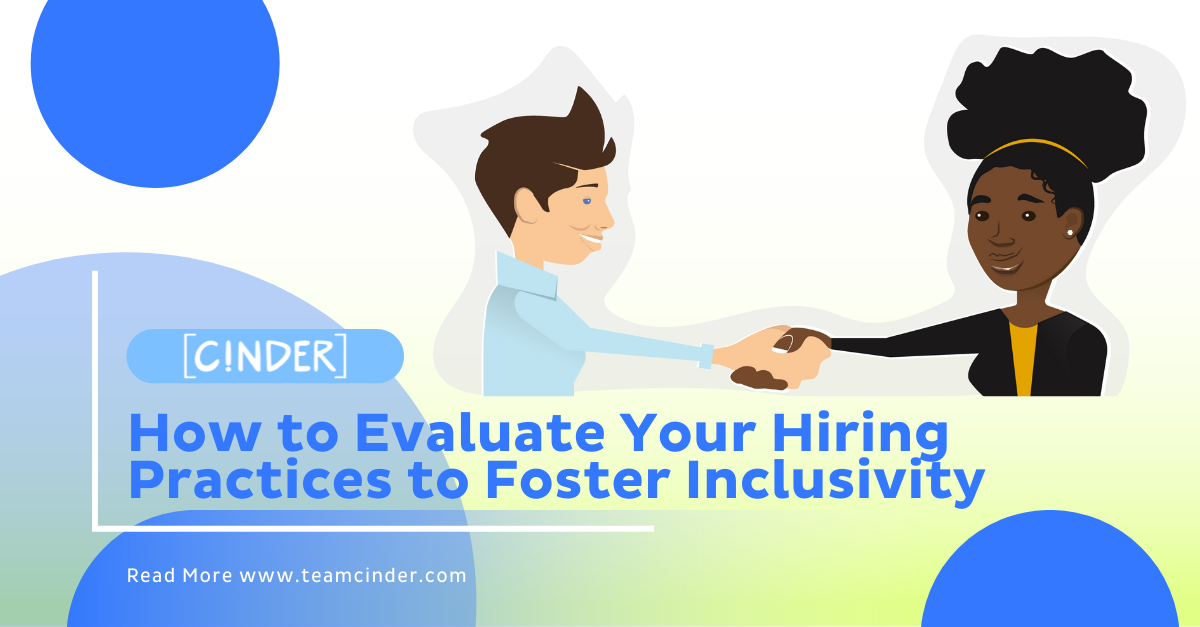If you are like most employers, struggling to hire folks from Black, Latinx, and other marginalized communities, you can’t keep doing the same thing and expect different results. Amongst the “great resignation”, we as workers are getting fed up with how we are treated. When we typically spend more time with our bosses, our teams, and our work than our families, it makes a big difference how that time is spent. It is, and will likely remain for some time, a candidate’s market. We know that employers are being pushed to not only “talk the talk” but deliver on promises of creating more equitable and inclusive environments.
So how can employers do a better job of recruiting the right folks in versus screening people out? It might seem simple, but by interrogating your hiring process you can make your workplace more accessible and attractive to a broader range of people.
Use concise, inclusive language
Just like recruiters scan resumes, job seekers rapidly read your job descriptions. This isn’t the time to write your company manifesto! And frankly, in 2022 we’re all running out of patience anyway. You should stay brief, concise, and direct, using strong subheadings, paragraph breaks, and bullet points to organize the information. Candidates also want to see how they will fit in at your company, and the job description could be their first introduction to that.
It’s important as well to think about whether or not your language will make people feel wanted, welcome, and excited about working with you. Are you using language that codes more masculine or feminine? Gender coding is using language that is historically associated with one gender or another. The easiest example of this is the use of pronouns. Make it neutral so you’re not discouraging anyone because they can’t see themselves in the description. Terminology is another key issue – are you using industry jargon unnecessarily? Can you say it in a different way to call in folks with transferable skills from other industries? Ageism is also a common problem I see with tech companies using emojis and slang in a way that speaks to millennials, and millennials only.
Assess your job qualifications and requirements
Does someone really need a degree for your role? What does it bring that other experience doesn’t? Requiring a degree screens out a huge amount of people that might be self-taught, have received a certificate, or have valuable life experience. You should also consider your required years of experience – what’s the difference in expertise at 3, 5, and 7 years? Does your team have the ability or capacity to train someone more junior and help them grow into the position? Remember, studies have shown that men are much more likely than women to apply for roles even if they don’t meet all the qualifications.
Partner with your recruiters
It’s important to work closely with the folks that are actually connecting with candidates. Help them understand what skills and expertise you’re wanting to recruit in to ensure they don’t screen those candidates out.
Consider what happens after the interview
While all of the above are things you should consider when updating job descriptions, don’t forget about the full employee life cycle of interviews, onboarding, training, and career with your organization. Who is being represented in each step in the process? Who are the materials created for?
These tips are a great place to start, but there is always more you can learn, and the conversation around these topics is constantly evolving. To learn more and get our latest tips, join our newsletter!

Katy Byrtus (she/her)
As a workforce solutions partner at Cinder, Katy helps companies work through EDI and recruiting challenges. She's a true connector in her community through curating and facilitating local and global events as well as conversations around equity & inclusion in our workplaces and beyond. Beyond Cinder, Katy is driven to further social justice issues such as housing, LGBTQ+ rights, and reproductive freedom, and brings many years of working with people through her herstory in social work and community organizing.
